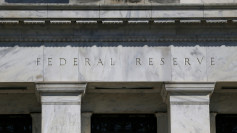The rising market inflation in China, driven by higher food prices, will not hamper the efforts of the monetary authority to combat economic sluggishness, analysts said.
Economists forecast that next year, after peaking in January, the consumer price index, the key barometer of inflation, will gradually fall as the government takes measures to curb the high price of pork by increasing supply. Monetary policy will, therefore, concentrate on stabilizing inflation and preventing a credit crunch, economists said.
Banks in China have recently released a total of 1.39 trillion yuan-denominated new loans ($197.5 billion) in November this year, a 138.7 billion yuan rise from a year earlier, the People's Bank of China said late Tuesday.
Social Financing Up
The faster-than-expected growth of bank loans was primarily due to the rapid expansion of corporate and long-term household debt, said Li Chao, Huatai Securities chief economist.
"It showed a strong demand for credit from businesses and individuals, and the central bank is keen to expand credit to support growth."
Total social financing, a broader indicator of the real economy credit that also involves funding by non-bank institutions and special local government bonds, increased last month by 1.75 trillion yuan. By the end of November, the sum hit 221,28 trillion yuan, 10.7 percent higher than a year ago, the central bank said.
Li projected the annual growth rate of total social financing in the first quarter of 2020 to reach a peak of 11.5 percent, and the central bank is likely to further reduce the reserve requirement ratio to retain adequate liquidity in the financial system.
Monetary Policy Facelift
Even as most major central banks returned to unconventional monetary policies with subzero interest rates and quantitative easing, China has maintained a relatively cautious monetary policy so far this year.
On Wednesday, the PBOC said it would push forward the newly introduced prime-rate loan reform with the aim of improving the mechanism for monetary policy transmission. Financial institutions are advised to use the prime loan rate as a benchmark for pricing loans.
In November, the highest level of the year, rising pork prices boosted the headline CPI to 4.5 percent. But as some economists calculated, the core CPI, which excludes food and energy prices, was only 1.4 percent.
The China Merchandise Reserve Management Center said on Tuesday that it would release 40,000 metric tons of frozen pork reserves into the market- the fourth such move and the largest amount since September - to tame the prices of pork.






